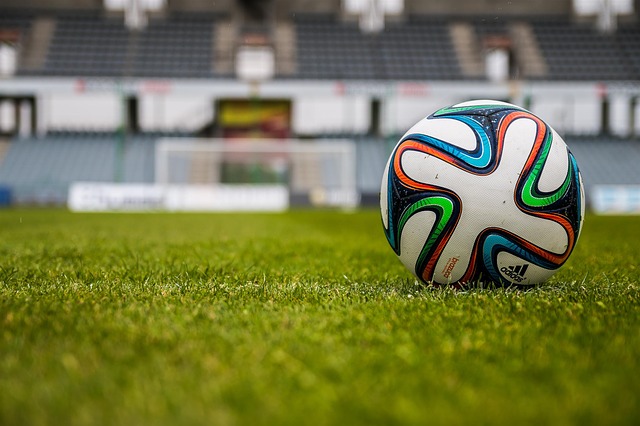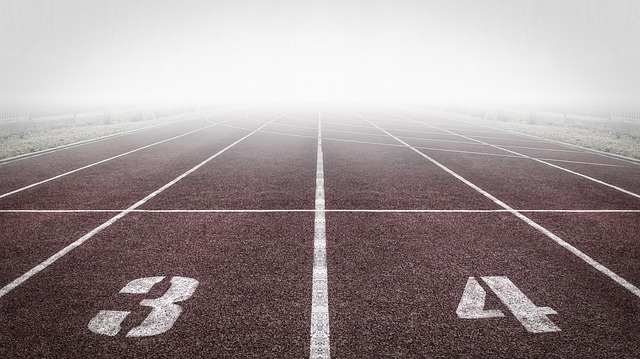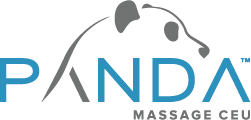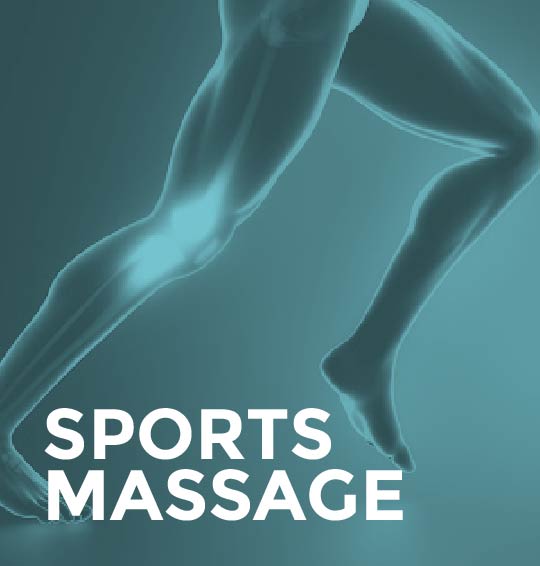Sports Massage CEU Course – Introductory Techniques – Outline and Learning Outcomes
Clients seek out the services of a professional massage therapist for a variety of reasons. Perhaps they’re experiencing acute levels of stress, and are looking to obtain relaxation as a result of their therapeutic sessions. Maybe they recently experienced an injury of some kind, and they’re in need of immediate care for acute pain. Or, oftentimes, the client is suffering from a chronic condition that’s been bothering them for many years, and they’ve finally opted to seek out professional help in the form of a bodyworker.
Regardless of the reason why a client approaches you, it’s your job to perform an intake, assess their condition, and work hard to help them improve. In order to accomplish this, you’ll deploy a variety of techniques and modalities, depending on your training on the one hand and the specific needs of the client on the other. These can include things like Swedish massage, deep tissue massage techniques, hydrotherapy, and more.
Some clients, though, decide to undergo bodywork treatment for a different reason. They might be a professional athlete with a competition coming up. Or maybe they’re a “weekend warrior,” who takes their CrossFit competitions incredibly seriously. Either way, they’re looking for a bodyworker who can help prepare them for athletic performance, and speed up their recovery following an event.
With sports massage techniques, you can do precisely that. And these techniques aren’t limited just to full-time and part-time athletes. Anyone who performs physical work as part of their occupation can benefit from this modality, especially those who undertake repetitive tasks that can cause injury over time.
Our massage CEU course provides sports massage training for practicing therapists like you. Are you ready to learn the techniques you’ll need to get started? Read on to learn more.
Learning Objectives for Our Sports Massage CEU Course

If you’re reading through this page, you’re likely considering signing up for this class. Maybe you’re trying to evaluate whether this course is the right choice for you. We understand that it’s a big commitment of time, energy, and money to sign up for an online course. That’s why we’ve outlined the learning objectives for this class below.
After looking over the learning outcomes for this course, you’ll have a better sense of what you can expect to gain from it. In addition, as an adult learner, familiarizing yourself with the course’s contents in advance will help prepare you to approach your learning experience in the most effective way possible. Remember: adult learners are often the most highly motivated and professionally prepared learners in the field of education. With the right preparation, you’ll be able to succeed with any course of study.
Broadly speaking, this program will cover the benefits of this modality; how to observe and palpate clients; common endangerment sites; client posture and alignment; the purpose of different sub-techniques and types; recovery and rehabilitative needs; common indications and contraindications; and more.
Let’s discuss each of these topics more specifically. After completing this course, you’ll be able to:
Describe the benefits of sports massage
With any technique or modality of bodywork, the ability to accurately describe its benefits to a client is paramount to your success in applying that technique. Nowhere is this more true than with sports massage. Your clients are likely seeking you out with specific needs in mind, and being able to articulate the benefits they can expect to gain from a therapeutic session is important. In this course, we’ll show you how.
Perform therapeutic observations and palpation
As a professional practitioner, you’re already familiar with how to observe and assess new clients when they come into your practice for the first time. With sports massage, though, there are some special considerations to take into account when it comes to client assessment. After completing this course, you’ll be able to perform therapeutic observations and palpate clients according to the specifics of this modality.
Identify endangerment sites
Endangerment sites are areas on the body where sensitive structures (such as veins, arteries, and nerves) are present near the surface of the skin. Recognizing and avoiding endangerment sites is important with any form of bodywork, and this modality is no different. In this course, you’ll learn how to identify and avoid common endangerment sites associated with the techniques discussed in the class.
Address client posture and perform alignment assessments
While various modalities seek to address client posture and alignment (such as Rolfing), sports massage is especially concerned with this aspect of a client’s overall well-being. After completing this course, you’ll be able to address both posture and alignment with your clients.
Describe the on-site pre-event, inter-event, and post-event purpose and function
The technique covered in this course comes in various forms, and these forms can be performed at a variety of different stages in an athlete’s schedule. In this course, you’ll learn how to work with clients before, during, and after athletic events, and the function of this modality in each scenario.
Describe athlete recovery, remedial, and rehabilitative needs
Athlete clients come with their own set of specific needs. These needs include those associated with their recovery post-performance; remedial needs; and rehabilitative needs. After completing this course, you’ll be able to describe each of these in detail and understand how they fit into your practice.
Determine indications and contraindications
As with any form of bodywork, the techniques discussed in this class are indicated for certain physical conditions and contraindicated for others. In this course, you’ll learn when to utilize these techniques and when to avoid them based upon your client’s condition.
Describe acute versus chronic conditions
Both acute and chronic conditions can benefit from the techniques covered in this class. In this course, we’ll discuss both, and prepare you for responding to both scenarios.
Address common sports-related pathologies
Certain pathologies are specific to athletes and athletic performance. After completing this course, you’ll have a solid foundational awareness of common pathologies related to athletic activity, along with how to approach them as a practitioner.
Utilize passive and active range of motion
Range of motion is essential to overall health. For athletes, though, it’s especially important, as it can determine their performance (or lack thereof) in athletic competition. In this course, you’ll learn how to utilize both passive as well as active range of motion to work with athletic clients.
Course Outline

By now, you ought to feel confident about the learning outcomes associated with our sports massage CEU course. Even with this awareness, though, you may be asking yourself some questions. What exactly is covered in this course? How much depth and detail is provided on certain topics? How is the course structured? What’s the layout like?
Below, you’ll find an exhaustive course outline that describes the full range of what’s covered in this course. This outline will give you a sense of what you can expect from the class itself. Additionally, it will provide you with an opportunity to identify areas within the material with which you might be less familiar. This gives you a chance to take note ahead of time of topics that might require more time and energy on your part to master.
What Is Sports Massage?
To begin this course, we’ll address the big picture question: what is sports massage? First, we’ll provide a functional definition that covers the full range of what’s included under the umbrella of this modality. Then, we’ll look at the founder of the discipline, Jack Meagher, and his contribution to the modality.
Benefits
Every form of bodywork has its own specific set of benefits. Some of these benefits overlap with other modalities, and some are unique to that modality. In this course, we’ll explore the variety of benefits associated with sports massage, including: increased athletic performance; lowered injury potential; psychological benefits; improved recovery; and more.
Interview and Intake Process
The interview and intake process is important with any client, regardless of the techniques being employed or of that particular client’s background. In sports massage, though, the interview and intake process are particularly important. Frequently, an athlete approaches you with very specific goals in mind. Understanding these goals is essential to providing them with the service they seek. As part of this course, we’ll discuss how to successfully and effectively perform an intake for clients.
Observation, Palpation and Posture
As part of your initial evaluation of a client, it’s essential to take three important things into account: observation, palpation, and the client’s posture. We’ll discuss each of these in turn, and provide you with the information you need to implement them in your practice.
Range of Motion
Range of motion is important for overall health, regardless of a client’s age or background. When working with athletes, though, range of motion is especially significant, as it can oftentimes delimit an athlete’s ability to perform effectively. In this course, we’ll discuss how to assess a new client’s range of motion, and work with them to optimize it.
Types of Sports Massage
This modality comes in a wide range of types, each with specific aims and outcomes. We’ll cover each of these in this course, including:
Pre-Event
Pre-event bodywork is aimed at preparing an athlete for an upcoming event.
Inter-Event
This short, on-site massage is offered in the middle of an athletic competition.
Post-Event
After a competitive event, this form of bodywork is provided to a client in order to speed their recovery and help them heal from any strain they encountered.
Maintenance
This long-term form of massage attempts to support an athlete’s big picture needs and goals.
Recovery
Recovery bodywork is effective for athletes suffering from injuries, as it promotes healing.
Remedial
When an athlete has suffered a moderate injury, remedial massage can be used to bring them back to peak performance.
Rehabilitative
When an athlete has suffered a severe injury or is recovering from surgery, rehabilitative can be an important part of an overall, comprehensive treatment plan in combination with other modalities and health professionals.
Recovery
The services you offer to clients in your office (or on-site) are just the beginning. In addition to massage services, you can also instruct your clients in post-recovery activities, such baths, stretching, and so on. In this course, we’ll teach you about these post-recovery techniques and prepare you to articulate them to your clients.
Scope of Practice and Ethics
Understanding your scope of practice as a massage therapist is an important component of proper ethical conduct. Your athletic clients may seek your advice on topics outside of your scope of practice. Recognizing when this is happened and putting a stop to it is essential. In this course, we’ll teach you how to set boundaries with clients and direct them to other resources when necessary.
Certification in Sports Massage
After completing this course, you may wish to specialize further in this modality. We’ll offer guidance in seeking out further certifications that can help you continue to develop your skills as a therapist.
Endangerment Sites
Endangerment sites are areas on the body where sensitive structures (such as veins, arteries, and nerves) are present near the skin’s surface. Certain endangerment sites are particularly important to identify when it comes to sports massage. We’ll discuss each of these in detail, including the: abdomen; axilla; face; elbows; low back; neck; and more.
Indications
Sports massage is indicated for a wide variety of conditions and scenarios. In this course, we’ll cover when this modality is appropriate for clients, including: muscle tension; splinting related to pain; fascial adhesions; scar tissue; and more.
Contraindications
As with any form of massage, sports massage techniques are contraindicated in certain situations. After completing this course, you’ll have gained an awareness of conditions where sports massage is contraindicated, including: fever; acute infections; edema; cardiac issues; cellulitis; herniated discs; and more.
What are CEUs, and Why are They Important?
As a professional massage therapist, you’re already aware of how important it is to continue your education. Every day as part of your practice, you’re gaining practical experience while working with clients that lends itself to your professional and personal growth. Additionally, however, it’s important to participate in continuing education via more traditional means. If you’re looking for a way to do that, look no further. Massage CEUs, or Continuing Education Units (GUIDE TO LMT CONTINUING EDUCATION), are an ideal means of continuing your education after finishing massage school.
Massage CEUs aren’t just important to your professional growth, either: they’re also a legal requirement. In most states, all licensed massage professionals are required to obtain a minimum number of CEUs in order to maintain their certification. Further, if you’ve obtained an NCBTMB National Certification credential (NCBTMB GUIDE), you’ll need to keep up with your biennial CEU requirements–and those hours will have to come from an NCBTMB Approved Provider.
At Panda Massage CEU™, we’re an NCBTMB Approved Provider of CEUs. This means that our CEU courses will not only meet your NCBTMB education requirements: they’ll also take care of your state licensure requirements at the same time.
Why Choose Panda Massage CEU?
There might be other online course offerings out there. But none of them compare to Panda Massage CEU.
Quality
Other online courses simple can’t match us on quality. As the premiere provider of online massage CEU classes, we stand behind our courses 100%.
Unique Topics
Other online providers have limited course offerings. At Panda Massage CEU, we’re excited to offer a variety of interesting options like hydrotherapy, cupping, and more.
Professional Narration
You might be surprised to learn that other online courses often lack proper narration. Meanwhile, Panda Massage CEU provides professional narration for all of our online courses, which makes them easy to follow.
Video Included
Video is an essential component for any educational material in a hands-on profession like massage. Despite this, many other online courses don’t include any video at all. We include video with all of our courses, which help to recreate an in-person, classroom feel.
Self-Paced
In this day and age, we’re all busy: and massage therapists are extra busy. We understand this, and that’s why we’ve made all of our courses self-paced. No matter your schedule, our courses are flexible: complete them at whatever pace makes sense for you.
Great Prices
Granted that quality matters, but what about price? Our courses aren’t just high quality. They’re also an amazing value. Our prices are set to suit any budget. And don’t forget: you’ll save thousands of dollars in travel expenses by skipping an out-of-state, in-person course.


There are no reviews yet.